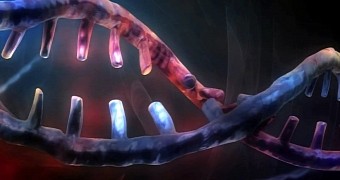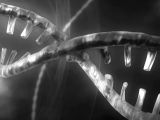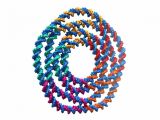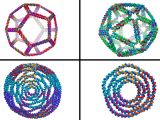Not that long ago we wrote about microscopic robots which could be 3D printed (despite the small scale) and deliver drugs directly to affected areas. Now we can say that researchers from the MIT are looking well beyond that stage.
You may or may not know that, back in May 2014, a replicable synthetic form of DNA was created, which wasn't found in nature but had all the traits of normal DNA.
This opened new doors in fields like diagnostics, the creation of medicines and vaccines, even the development and production of nanomaterials.
DNA can be programmed by changing the sequence, and its stable structure allows scientists to build nanoscale structures based on need.
At least this was the idea. Now, MIT experts can finally say that they have figured out how to create nanostructures from DNA.
MIT researchers turn synthetic DNA into ink for nanoscale 3D printed structures
A team under the leadership of Mark Bathe, an associate professor of biological engineering, developed a program called CanDo back in 2011, which can generate 3D DNA structures.
Back then, it was limited to rectangles and hexagons, but a more complex computer algorithm can generate more complex structures now, by cutting sequences into subcomponents.
Using those components (rings, disks and spheres) as the building blocks for programmed DNA nanostructures, it becomes possible to create symmetric cages like tetrahedrons, octahedrons, and dodecahedrons.
3D printing technology allows for computer-generation of symmetric cages like those to be given physical form at nanoscale level.
The purpose of the 3D printed DNA nanostructures
According to Bathe, 3D printed nanoscale arbitrary geometries of DNA structures can be combined with other kinds of molecules, like chromospheres which activate during photosynthesis.
Studying bacterial toxins is another thing that can be done, eventually building up to the creation of systems for RNA and other drug therapies.
Designers only need to supply the sequence of DNA that they want to use in DNA design research, and the MIT team says that computer-generated models will be available in the future as well. The designer will just provide a shape and the computer model will generate a sequence that can produce that shape.
This is what will lead to the transformation of synthetic DNA into “ink” useable in nanoscale 3D printing.
What this all means in more normal terms is that scientists have figured out how to implement and adapt additive manufacturing principles to DNA at the molecular level and beyond. Those Sci-Fi scenes where an entire body is created in an hour or minutes may still be far off, but they're not just a pipe dream anymore.

 14 DAY TRIAL //
14 DAY TRIAL // 


